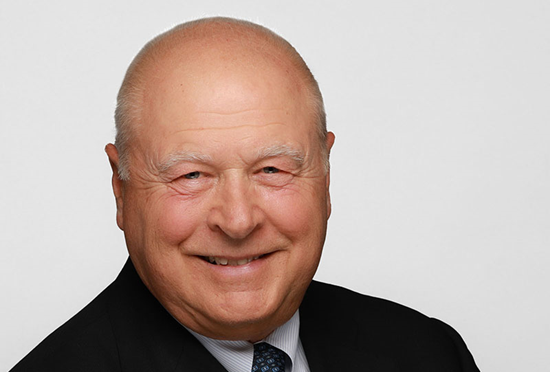OTC derivative costs and usage remodelled by regulation

“ISDA protocols for amendments to existing ISDA/CSAs try to limit the impact on repapering to accommodate the new rules,” he adds. “However, this repapering is an additional burden to support functions within an organisation, where 1,000s of such agreements may exist.”
The increase in margin call volumes could overwhelm current operational processes and system infrastructures, warns Michael Shipton, chief executive officer at GlobalCollateral, and will require huge investment in technology and an overhaul of the settlement, exceptions management and dispute resolution processes in place today.
Restraining growth
Deloitte estimated back in 2014 that
€15.5bn ($17.5bn) could be added to
costs in the OTC derivatives market
in the EU once various reforms to
margin and capital requirements are
fully implemented. The jump in costs
for non-centrally cleared transactions
is expected to reach €13bn annually,
compared with €2.5bn for those that fall
under the clearing obligation.
Since Deloitte’s report was published, the persistent low rate environment has exacerbated the impact of new regulations on derivative pricing, further damaging what has been major growth area for banks.
Derivatives revenues expanded at a compound annual rate of around 30% through the 2000s, according to a Berenberg analyst note in July 2016. Economic volatility even continued to boost demand for Delta 1 derivatives and synthetic finance during 2015, lifting derivatives’ contribution to US banks’ equity revenues to 16.3%, up 2% on 2014.
To date, the lack of return on cash collateral has not curtailed trading, but the Royal Bank of Scotland’s announcement in August that it is passing on the cost of negative rates to around 70 large clients that use cash as collateral when trading derivatives processed through clearinghouses such as LCH Swapclear, is yet another sign of growing pressure.
“We expect a raft of new costs to emerge over the next five to ten years,” says Andy Nybo, global head of research and consulting at TABB Group. “Due to the spectre of these increased costs, banks are picking and choosing sectors they want to trade in, with some leaving the market altogether since they have become much more expensive to trade.
“The regulatory framework, such as the pressure capital requirements have placed on banks, has forced them to re-evaluate what business the banks want to be in and it has also absolutely impacted their relationship with clients. Each bank is having to look at its sweet spot.”
Standardised products
Banks have already been moving away from capital intensive non-cleared products and focussing more on standardised ones. More than half of all outstanding derivatives are now centrally cleared, almost twice the percentage of 2009, according to the UK Department for Business, Innovation and Skills (BIS).
Some banks may launch more capital efficient products, and some large dealer banks may take a defensive position to protect the cream of their client base and higher-margin services.
On the other side of the trade, many
derivatives users are already becoming
more relaxed about buying less
perfect hedges via standardised OTC derivatives in place of bespoke noncleared
arrangements. There is a wide
choice of instruments for funds; they can
short stock, buy on margin, use an OTC
instrument, use a listed option on an
equity, or a future on an equity index.
At the end of the day, investors and other end-users will use an instrument providing the lowest cost for the exposure that meet the demands of their strategy,” explains Nybor. “They may use ETFs, futures or other listed products to effect exposure requirements and avoid the increased costs of using swaps. Some end users may choose to make a customised bilateral agreement with a broker-dealer to use the most costefficient solution in each case.
“Changes in behaviour are more related to how end-users trade, risk factors and existing trade processes. Often, however, when they need to exit the trade liquidity will be their biggest concern.”
“We would highlight the fact that reduced liquidity has led some asset classes such as credit to become buyand-hold investments, with portfolio managers having to use new issuance rather than the secondary markets to turn over their portfolios,” says Colin Graham, chief investment officer, multi-asset solutions, BNP Paribas Investment Partners. With volatility expected to be higher on average over the next few years, he anticipates more price shocks as the ability of producers to warehouse risk during periods of market stress is reduced.
Competition from ETFs
ETF providers see the cost increases
and strained liquidity of derivatives
as opportunities to grow their market,
particularly as futures investors have
faced a significant increase in roll costs. Vincent Denoiseaux, head of passive
quant strategy at Deutsche Asset
Management, says that clients across
the range of funds of funds, hedge funds
and more recently pension funds and
insurance companies are using ETFs to
replace core futures exposures on large
equity indices such as the Eurostoxx and
S&P 500.
“While the cost of providing a future or a swap has increased for investment banks because they need to reflect the increased cost of capital use on their balance sheets, ETFs over the same period have become cheaper. Management fees and bid/offer spreads have both compressed quite massively.”
When an investor is looking for exposure for the medium term, perhaps from three months and above, ETFs become more efficient and cheaper, according to Denoiseaux.
“According to our calculations, over the last five years an ETF on the EuroSTOXX or DAX would have been cheaper by 30-50bps per year than buying an equivalent fully-funded future or swap. In the context of an active manager this may look like a small amount, but in the index replication landscape it translates into a much bigger figure.
“Some futures investors have used liquid futures, say DAX, EuroSTOXX and SPX, to replicate MSCI World, owing to the lack of liquidity of its futures. Some are now using MSCI World ETFs to gain exposure to this index, while country ETFs enable investors to take a more specific exposure, such as MSCI World ex a particular country,” Denoiseux explains
GFT’s Nicholls adds that demand for OTC derivatives has seen quite a steady decline in the move towards clearing. “It’s not certain that clearing brings the best price. Transacting through central clearing may not be cheaper than noncleared derivatives, when all costs are taken into account, even after the onset of IOSCO/BCBS261, as a recent study by the Office of Financial Research showed.”
“As costs per transaction rise we may find a move away from hedging by smaller buy-side firms and pension funds, which may mean a higher proportion of risk maintained on their own balance sheets, which in turn has potentially serious repercussions for local economies.”
With increasingly tough capital constraints against trading book exposures, and the cost of collateral increasing with demand, whether cleared or non-cleared the cost of each derivative transaction is likely to increase further. These costs will need to be priced in.
Operational costs need to be controlled and the best way to do this is through the industrialisation of process, according to Nicholls. “Buyside firms unable to assist their sell-side counterparties in becoming willing automated counterparties will find these costs also priced in – eventually.”
Containing costs
“There may well be a two-tier market
for derivatives in the medium term,
one where compliance through an
automated route and sympathetic to sellside
banks costs see preferential rates,
versus a manual settlement route with
unfavourable terms for the banks’ capital
or liquidity receiving a worse rate. Those
firms are likely to be smaller or less able
to meet technical requirements to ensure
best price.”
New collateral optimisation solutions should help mitigate additional costs, such as GlobalCollateral, a joint venture between DTCC and Euroclear. “Regulation will mean that market participants must adopt a best practice approach to collateral management that will deliver wider benefits,” says Ted Leveroni, GlobalCollateral’s chief commercial officer.
“For example, for the sell-side, greater efficiency of collateral processes means banks can make their liquidity work harder by maximising their balance sheet and optimising their use of collateral. For the buy side, an efficient collateral process will ensure that the front office is not held back by inefficient processes managed by the middle office and risks of running out of collateral. Improved collateral processes also provide increased transparency for the buy side, giving firms greater risk management capabilities and control.”
Found this useful?
Take a complimentary trial of the FOW Marketing Intelligence Platform – the comprehensive source of news and analysis across the buy- and sell- side.
Gain access to:
- A single source of in-depth news, insight and analysis across Asset Management, Securities Finance, Custody, Fund Services and Derivatives
- Our interactive database, optimized to enable you to summarise data and build graphs outlining market activity
- Exclusive whitepapers, supplements and industry analysis curated and published by Futures & Options World
- Breaking news, daily and weekly alerts on the markets most relevant to you




